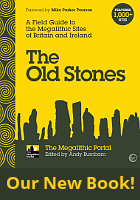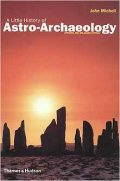<< Text Pages >> Anzaf - Hillfort in Turkey
Submitted by davidmorgan on Friday, 14 January 2011 Page Views: 3598
Iron Age and Later PrehistorySite Name: AnzafCountry: Turkey
NOTE: This site is 1.154 km away from the location you searched for.
Type: Hillfort
Nearest Town: Van
Latitude: 38.558939N Longitude: 43.471033E
Condition:
| 5 | Perfect |
| 4 | Almost Perfect |
| 3 | Reasonable but with some damage |
| 2 | Ruined but still recognisable as an ancient site |
| 1 | Pretty much destroyed, possibly visible as crop marks |
| 0 | No data. |
| -1 | Completely destroyed |
| 5 | Superb |
| 4 | Good |
| 3 | Ordinary |
| 2 | Not Good |
| 1 | Awful |
| 0 | No data. |
| 5 | Can be driven to, probably with disabled access |
| 4 | Short walk on a footpath |
| 3 | Requiring a bit more of a walk |
| 2 | A long walk |
| 1 | In the middle of nowhere, a nightmare to find |
| 0 | No data. |
| 5 | co-ordinates taken by GPS or official recorded co-ordinates |
| 4 | co-ordinates scaled from a detailed map |
| 3 | co-ordinates scaled from a bad map |
| 2 | co-ordinates of the nearest village |
| 1 | co-ordinates of the nearest town |
| 0 | no data |
Be the first person to rate this site - see the 'Contribute!' box in the right hand menu.
Internal Links:
External Links:
Hillfort in Van Province, Turkey.
An Urartian fortress built by King Ispuini (830-810 BCE).
You may be viewing yesterday's version of this page. To see the most up to date information please register for a free account.
Do not use the above information on other web sites or publications without permission of the contributor.
Click here to see more info for this site
Nearby sites
Click here to view sites on an interactive map of the areaKey: Red: member's photo, Blue: 3rd party photo, Yellow: other image, Green: no photo - please go there and take one, Grey: site destroyed
Download sites to:
KML (Google Earth)
GPX (GPS waypoints)
CSV (Garmin/Navman)
CSV (Excel)
To unlock full downloads you need to sign up as a Contributory Member. Otherwise downloads are limited to 50 sites.
Turn off the page maps and other distractions
Nearby sites listing. In the following links * = Image available
7.3km SW 235° Rusahinili* Hillfort
10.4km W 268° Kalecik Stones Standing Stones
12.7km WSW 241° Urartu Museum Museum
13.3km WSW 242° Tushpa* Ancient Village or Settlement
23.1km S 183° Sardurihinili* Ancient Palace
28.0km NW 306° Ayanis Hillfort
32.2km SW 225° Samran Channel* Ancient Mine, Quarry or other Industry
45.7km SE 143° Yurtbasi Hillfort
46.0km NNE 31° Körzüt Castle* Hillfort
72.0km WNW 295° Kef Kalesi Hillfort
90.3km NW 326° Giriktepe Ancient Village or Settlement
111.8km SSE 168° Tirsin Plateau Rock Art
168.9km N 2° Asagi Aktasli Ancient Palace
171.3km WSW 238° Güzir Höyük Ancient Village or Settlement
174.7km NNE 32° Artashat Ancient Village or Settlement
174.9km NNE 33° Khor Virap* Early Christian Sculptured Stone
175.1km WNW 290° Kayalidere Ancient Village or Settlement
179.4km NE 50° Ovchular Tepe Ancient Village or Settlement
180.1km SSW 212° Amarsava Ancient Village or Settlement
180.3km WNW 290° Tepekoy* Ancient Village or Settlement
181.2km WSW 247° Ayngerm Yani Ancient Village or Settlement
182.9km ENE 65° Duzdag Ancient Mine, Quarry or other Industry
183.5km SW 232° Cemka Hoyugu* Ancient Village or Settlement
183.6km SW 232° Boncuklu Tarla* Ancient Temple
184.1km SW 232° Zeviya Tivilki Ancient Village or Settlement
View more nearby sites and additional images






 We would like to know more about this location. Please feel free to add a brief description and any relevant information in your own language.
We would like to know more about this location. Please feel free to add a brief description and any relevant information in your own language. Wir möchten mehr über diese Stätte erfahren. Bitte zögern Sie nicht, eine kurze Beschreibung und relevante Informationen in Deutsch hinzuzufügen.
Wir möchten mehr über diese Stätte erfahren. Bitte zögern Sie nicht, eine kurze Beschreibung und relevante Informationen in Deutsch hinzuzufügen. Nous aimerions en savoir encore un peu sur les lieux. S'il vous plaît n'hesitez pas à ajouter une courte description et tous les renseignements pertinents dans votre propre langue.
Nous aimerions en savoir encore un peu sur les lieux. S'il vous plaît n'hesitez pas à ajouter une courte description et tous les renseignements pertinents dans votre propre langue. Quisieramos informarnos un poco más de las lugares. No dude en añadir una breve descripción y otros datos relevantes en su propio idioma.
Quisieramos informarnos un poco más de las lugares. No dude en añadir una breve descripción y otros datos relevantes en su propio idioma.